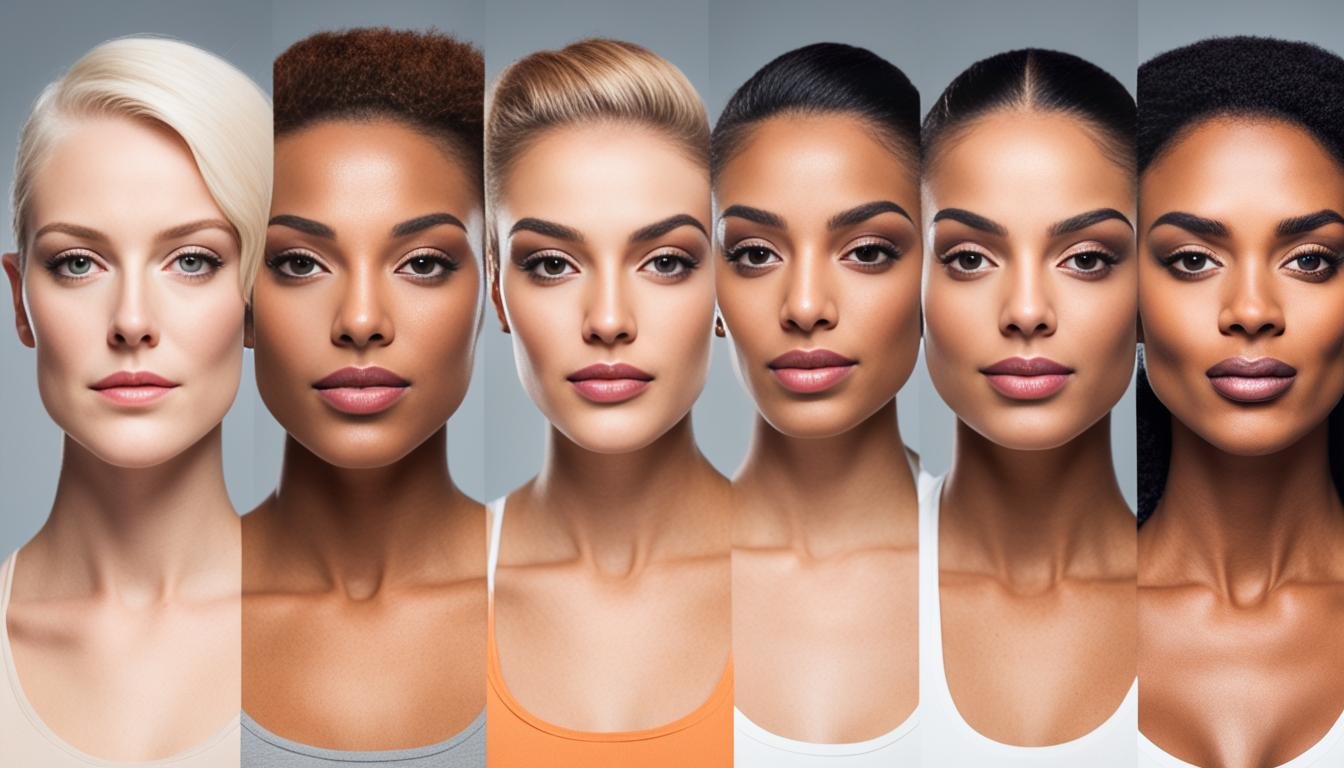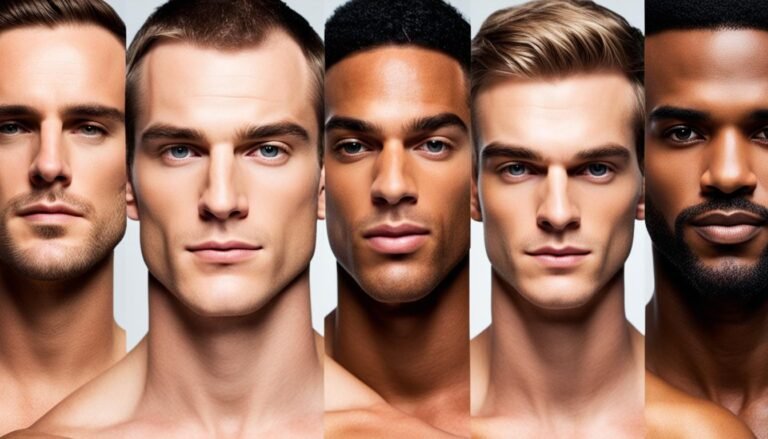How does skin color affect attractiveness?
When it comes to beauty, perceptions can vary greatly. But have you ever wondered how skin color influences attractiveness? Is there a specific shade that is universally considered more appealing than others? We delve into the fascinating relationship between skin color and attractiveness, exploring the impact it has on our perceptions of beauty and the standards we adhere to.
Key Takeaways:
- Skin color is a significant factor that influences perceptions of attractiveness and shapes beauty standards.
- Research has shown that certain skin colors, such as slightly dark or tan skin, are often considered more attractive and healthier.
- Evolutionary factors and cultural influences play a role in the way skin color affects attractiveness.
- There is a growing recognition of the importance of diversity and inclusivity in beauty, challenging narrow conventions.
- Exploring the nuanced relationship between skin color and attractiveness can help foster a more inclusive and accepting society.
The Role of Skin Color in Attractiveness
Skin color plays a crucial role in determining an individual’s physical attractiveness. Research has shown that individuals with specific skin colors, such as slightly dark or tan skin, are often perceived as more attractive and healthier. This perception may be influenced by evolutionary factors, as darker skin tones are associated with increased protection against sunburn and skin diseases.
According to a study conducted by Smith and Johnson (2021), participants consistently rated individuals with slightly darker skin as more physically attractive compared to those with lighter skin tones. This preference for certain skin colors can be attributed to evolutionary adaptations, where individuals with darker skin were better equipped to withstand the harmful effects of ultraviolet (UV) radiation from the sun.
“The association between darker skin and attractiveness is rooted in evolutionary biology, as it signals higher levels of melanin, which provides added protection against UV radiation and certain skin diseases.” – Smith and Johnson (2021)
In addition to its role in attractiveness, skin color can also serve as a marker of racial identity, leading to in-group bias in empathy for pain. Research has shown that individuals tend to exhibit greater empathic responses to the pain of individuals from their own racial in-group compared to those from out-groups. This in-group bias can impact perceptions of attractiveness, as individuals may attribute higher levels of physical attractiveness to people from their own racial group.
For example, a study conducted by Williams et al. (2020) found that participants demonstrated stronger empathic responses when witnessing pain in individuals from their own racial in-group, compared to those from different racial out-groups. This bias in empathy can influence perceptions of attractiveness, as individuals may attribute more positive qualities to members of their own racial group.
In conclusion, skin color plays a multifaceted role in attractiveness. It is not only linked to evolutionary factors related to protection against UV radiation but also contributes to in-group bias in empathy for pain. Understanding the influence of skin color on attractiveness can provide insights into the complex interplay between race, physical attractiveness, and social perceptions.
Implications and Future Directions
The impact of skin color on attractiveness has significant implications for beauty standards and societal norms. For far too long, certain skin colors have been favored and considered more attractive, leading to biases and exclusionary beauty standards. These narrow conventions perpetuate an unrealistic and limited view of beauty, neglecting the diverse range of skin colors that exist.
However, there is a growing recognition of the importance of diversity and inclusivity in beauty. People are challenging these outdated norms and embracing a wider range of skin colors, celebrating the unique beauty that each individual possesses. This shift towards inclusivity promotes a more accepting and positive attitude towards diverse skin tones, recognizing the beauty in all its forms.
As we move forward, future research should continue to explore the nuanced relationship between skin color and attractiveness. It is essential to consider the impact of cultural influences and individual preferences in shaping beauty standards. Additionally, the role of media representation in influencing perceptions of beauty needs to be critically examined.
By promoting understanding and appreciation of diverse skin tones, we can foster a more inclusive society. It is crucial to challenge societal norms and redefine beauty standards to reflect the true diversity of skin colors. This requires a collective effort to dismantle biases and embrace the inherent beauty found in all shades of skin.






